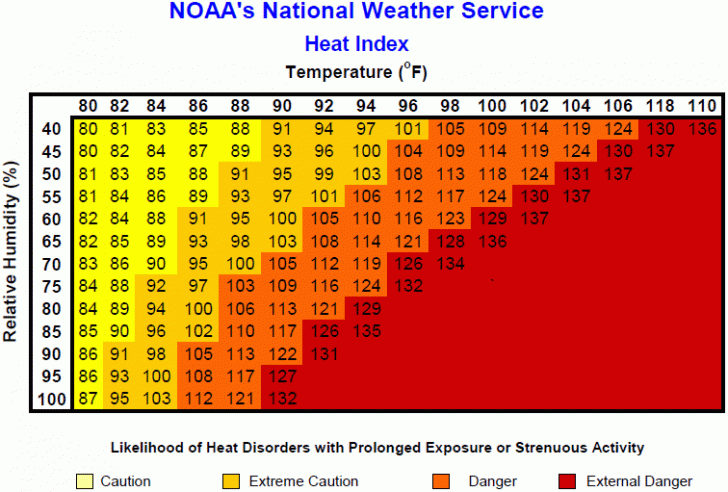As I write this, the actual temperature outside is around 91 degrees, but the “heat index” is about 106 degrees – but what is it about the extra water in the air that makes it feel (absolutely, one-hundred-percent) unbearable outside?
Well, part of that reason can be explained by our bodies natural cooling system – sweating.
https://www.instagram.com/p/Bz57ydEBXfm/
Sweat works to cool us by evaporating from our skin, which wicks away heat in the process, but when the air outside is too moist, the sweat drips of us instead of evaporating.
It leaves you just as smelly, but not nearly as cool.
The National Weather Service has a handy chart to help weather people determine the relative humidity (the amount of water the air can hold, based on temperature) and compute the “heat index,” too.
In 1979, Robert G. Steadman, an academic textile researcher, wrote a paper that laid out the basic factors that affect how hot a person felt under a given set of conditions, and the resulting chart is basically being used to calculate heat index today.

Image Credit: Wikimedia Commons
The research relies on the idea of a “typical” person – 5’7, 147 pounds, wearing long pants and a short-sleeved shirt, and walking over 3mph in the shade (enjoying a light breeze), so while it may vary slightly from person to person, probably not enough to make a huge difference on any given day.
The National Weather Service has a four-tiered system to tell people how dire the heat situation is out there, with days with a heat index over 130 classified as “extreme danger,” and “danger” days ranging from 105-130.
https://www.instagram.com/p/B1ZgLkQBs8c/
On those days, prolonged exposure to the heat and humidity can cause sunstroke, heat cramps, heat exhaustion, and heat stroke, so you know. You probably want to stay inside.
I’ll be here on my couch, praying my air conditioner makes it through another six weeks of summer weather.
